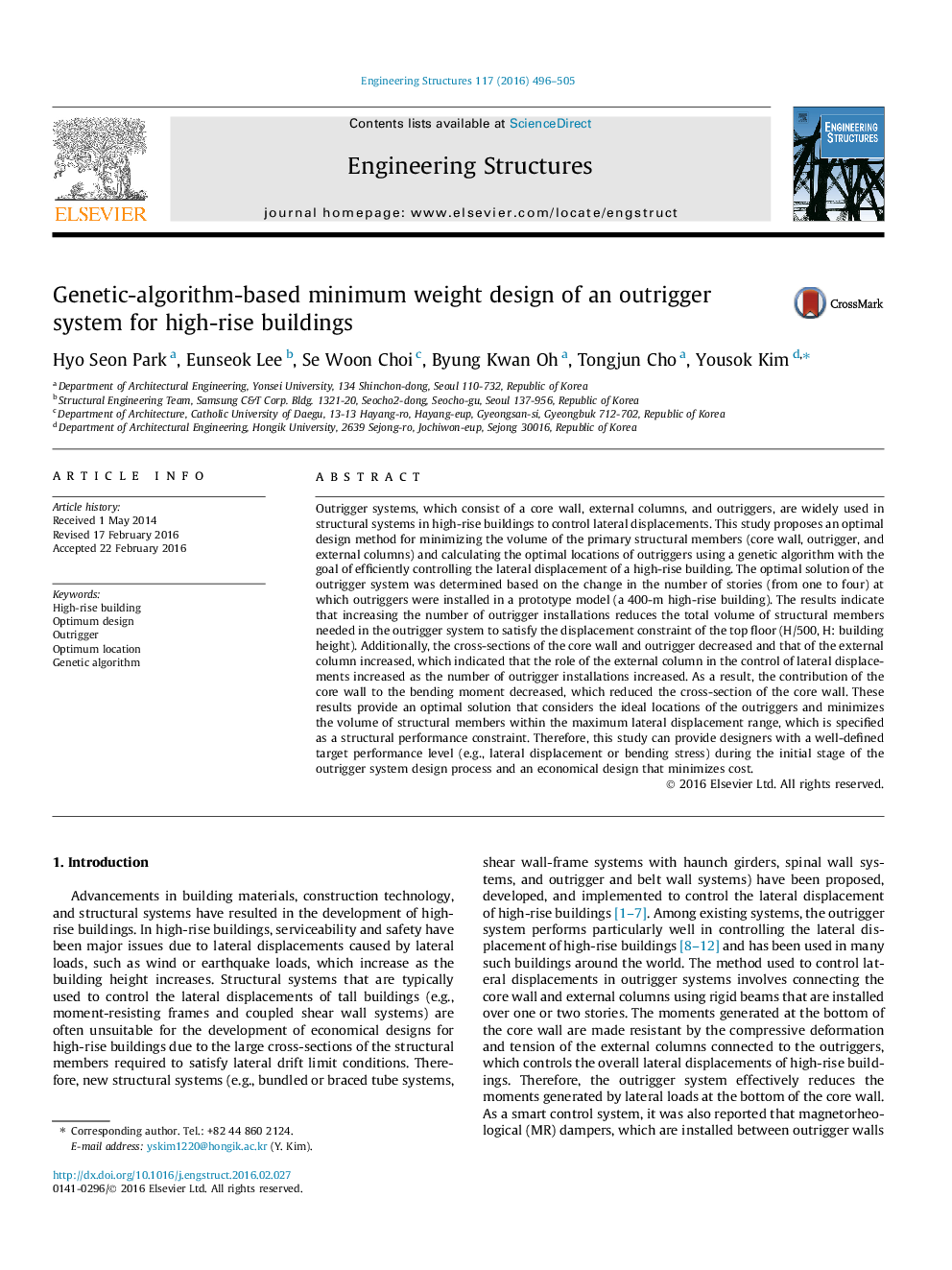| Article ID | Journal | Published Year | Pages | File Type |
|---|---|---|---|---|
| 6740077 | Engineering Structures | 2016 | 10 Pages |
Abstract
Outrigger systems, which consist of a core wall, external columns, and outriggers, are widely used in structural systems in high-rise buildings to control lateral displacements. This study proposes an optimal design method for minimizing the volume of the primary structural members (core wall, outrigger, and external columns) and calculating the optimal locations of outriggers using a genetic algorithm with the goal of efficiently controlling the lateral displacement of a high-rise building. The optimal solution of the outrigger system was determined based on the change in the number of stories (from one to four) at which outriggers were installed in a prototype model (a 400-m high-rise building). The results indicate that increasing the number of outrigger installations reduces the total volume of structural members needed in the outrigger system to satisfy the displacement constraint of the top floor (H/500, H: building height). Additionally, the cross-sections of the core wall and outrigger decreased and that of the external column increased, which indicated that the role of the external column in the control of lateral displacements increased as the number of outrigger installations increased. As a result, the contribution of the core wall to the bending moment decreased, which reduced the cross-section of the core wall. These results provide an optimal solution that considers the ideal locations of the outriggers and minimizes the volume of structural members within the maximum lateral displacement range, which is specified as a structural performance constraint. Therefore, this study can provide designers with a well-defined target performance level (e.g., lateral displacement or bending stress) during the initial stage of the outrigger system design process and an economical design that minimizes cost.
Related Topics
Physical Sciences and Engineering
Earth and Planetary Sciences
Geotechnical Engineering and Engineering Geology
Authors
Hyo Seon Park, Eunseok Lee, Se Woon Choi, Byung Kwan Oh, Tongjun Cho, Yousok Kim,
